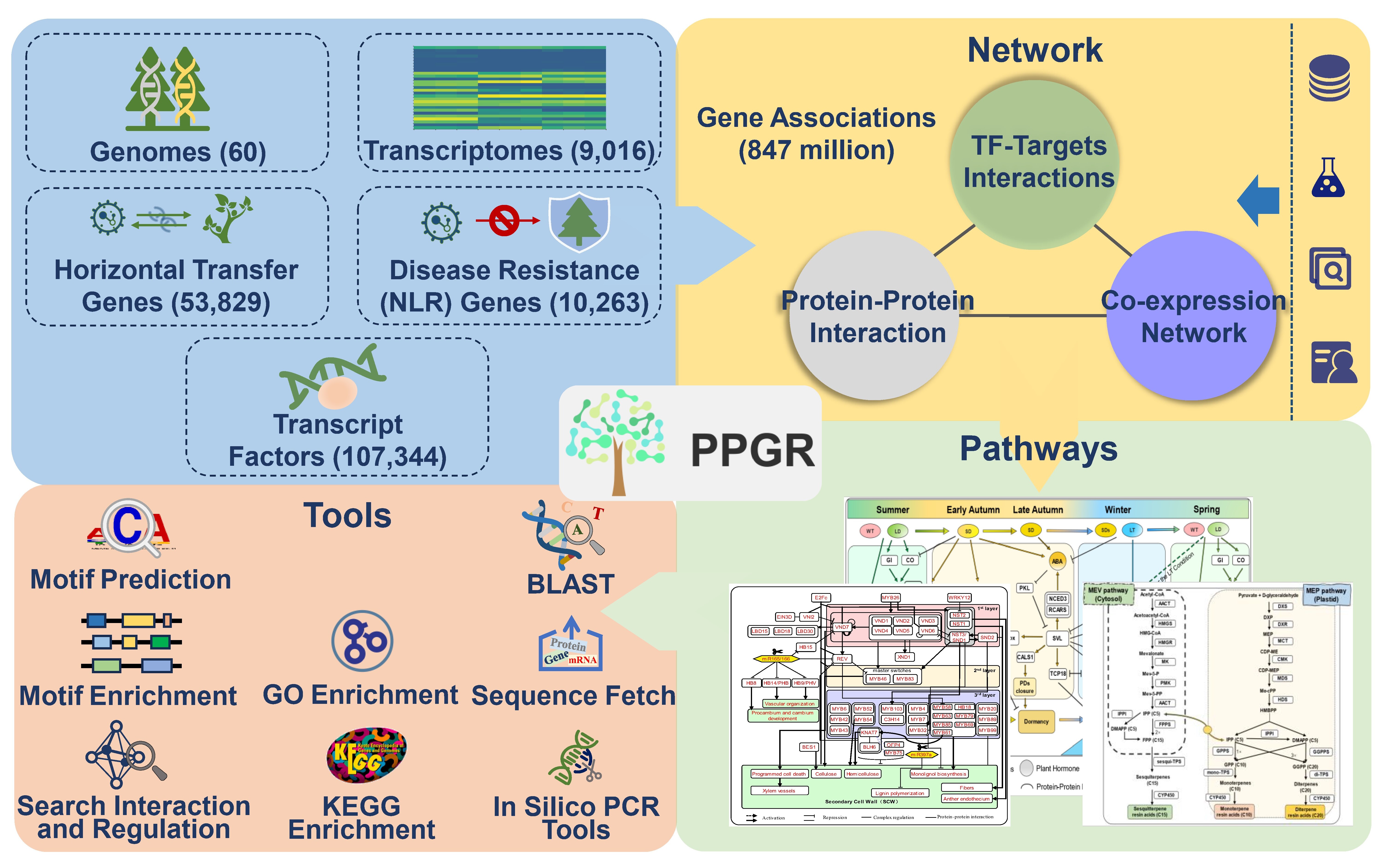PPGR: Comprehensive Perennial Plant Genomes and Regulation Database
Perennial woody plants play a vital role in forestry crops, serving not only as valuable sources of wood, essential oils, and resins but also contributing significantly to ecosystem stability, industrial production, and the pharmaceutical industry. The systematic management and in-depth analysis of genomics resources and regulation information for perennial woody plants are of great importance in uncovering the biological functions of this plant category, providing invaluable support for molecular breeding and germplasm innovation.
Recently, researchers led by Dr. BAO Yiming from the National Genomics Data Center, Beijing Institute of Genomics of Chinese Academy of Sciences (China National Center for Bioinformation), in collaboration with the research team of Dr. XIE Jianbo from Beijing Forestry University, has launched the Perennial Plant Genomes and Regulation database (PPGR). This work is available online in Nucleic Acids Research with the title "PPGR: A Comprehensive Database for Perennial Plant Genomes and Regulation", which serves as a shared platform for the analysis and utilization of multi-omics data and genetic regulatory resources.
PPGR has integrated genome data from 60 significant perennial woody plant species, including but not limited to Populus trichocarpa, Pinus taeda, Eucalyptus grandis, and Ginkgo biloba. Applying a standardized analysis pipeline, PPGR has examined 9,016 plant transcriptome samples, resulting in the identification of 107,344 transcription factors, 10,263 disease resistance genes, as well as 53,829 horizontally transferred genes. This wealth of data, including 847 million gene-gene interactions and co-expression pairs, has been utilized to construct a multidimensional gene regulatory network. Additionally, PPGR offers user-friendly and interactive functional modules for browsing and analyzing multi-omics data. It also includes series of online analysis tools for functional enrichment analysis of gene sets, regulatory network retrieval, sequence enrichment, and homology detection.
As a comprehensive resource in the field of perennial woody plants, PPGR provides users with a convenient means to access various dimensions of reference information related to genes of interest, including their genomic location, structure, functional domains, homologous genes, interacting genes, regulatory pathways, and expression patterns. In the process, it has provided new insights into essential metabolic pathways within perennial woody plants, such as wood formation, seasonal dormancy, terpene biosynthesis, and leaf senescence. With the release and continuous updates of the PPGR database, it promises to enhance our understanding of the genetic basis of perennial plants and improve the identification of gene functions associated with their specific traits.

Overview of PPGR (Image by NGDC)